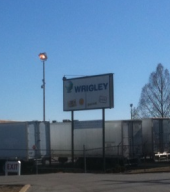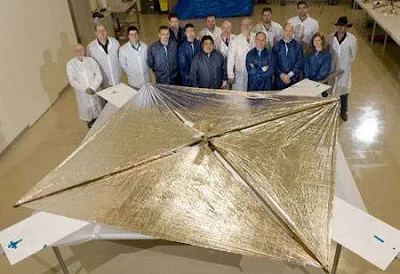 Yesterday I predicted that solar activity would affect my little DaVinci code QRSS beacon. Sure enough, Pablo, EA4FUK, reports seeing my shark fin this morning on EA1FAQ's grabber. He sent this image:
Yesterday I predicted that solar activity would affect my little DaVinci code QRSS beacon. Sure enough, Pablo, EA4FUK, reports seeing my shark fin this morning on EA1FAQ's grabber. He sent this image: A big X-Class flare took place at 0200Z, which was probably just a few hours before Pablo was looking at the FAQ grabber. This pond crossing probably also coincided with gray line time at his location.
A big X-Class flare took place at 0200Z, which was probably just a few hours before Pablo was looking at the FAQ grabber. This pond crossing probably also coincided with gray line time at his location.Paul, NA5N, puts it all in context (in a message to QRP-L):
Gang,
There was an X2 flare about 0200Z 15 FEB (about 2100 EST). This has caused HF radio blackouts on the sunlit side of the sun (not us!). As this
subsides, the E/F layers will be highly ionized for good reflection. This
event has already elevated the solar flux to about 113 (average lately about
80-85). While this doesn't do much for us right now in North America, it
could create some very interesting morning gray line propagation if you're
one of those morning people.
The X2 event didn't have much density to it, only creating a shock wave of
about 550 km/sec. However, the M6 two days ago had a shock wave of about 1200 km/sec. - enough to cause a geomagnetic storm when it is expected to arrive Tuesday morning.
What is important is to keep an eye on the sun for further activity at:
http://www.swpc.noaa.gov/today.html or other sites.
These active regions are near the center of the sun, meaning any further
flares will send shock waves directly at us. The active regions are highly
magnetized, meaning they are capable of generating further M or X class
flares. If another flare or two happens tomorrow (Tuesday) during daylight hours, it will raise the solar flux and the higher bands will be open for the duration of daylight.
Therefore, the upper bands may be open, but may be interfered with for a few hours if a geomagnetic storm is triggered. It's a matter of dodging the bad stuff (geomagnetic storms) to get to the good stuff (enhanced E/F
propagation).
The only question left ... is this a hiccup on the sun, or is it finally
waking up from hibernation?
72, Paul NA5N










